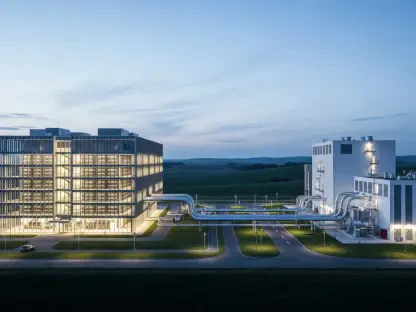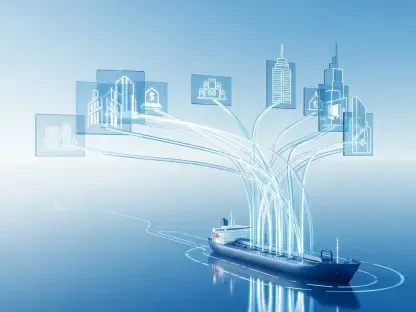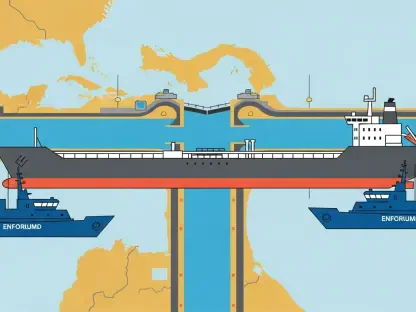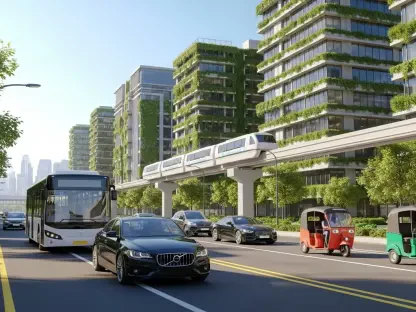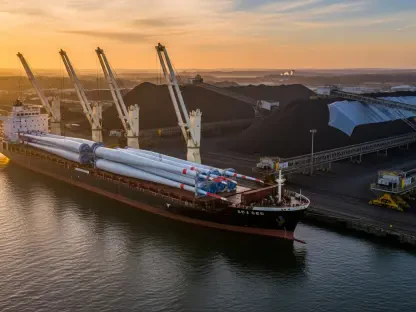I’m thrilled to sit down with Christopher Hailstone, a seasoned expert in energy management and renewable energy, and our go-to authority on utilities. With his deep knowledge of electricity delivery, grid reliability, and security, Christopher offers unparalleled insights into the evolving energy landscape. Today, we’re diving into the surge of virtual power plants (VPPs) in North America, their connection to the booming data center industry, and the challenges and opportunities shaping this space. Our conversation explores how VPPs are transforming energy delivery, the drivers behind their rapid deployment, and what this means for utilities, data centers, and everyday energy users.
Can you explain what a virtual power plant is and why it’s becoming a game-changer for meeting energy demands, particularly for data centers?
Absolutely. A virtual power plant, or VPP, is essentially a network of decentralized energy resources—like solar panels, battery storage, and even demand response programs—that are aggregated and managed as a single, unified power source. Unlike traditional power plants, VPPs don’t rely on a single physical facility; instead, they coordinate distributed assets to balance supply and demand in real time. For data centers, which have massive, round-the-clock energy needs, VPPs are a game-changer because they provide flexible, scalable power solutions. They can quickly respond to spikes in demand, helping to stabilize the grid in ways that traditional plants often can’t.
How do VPPs differ from conventional power plants in their approach to energy delivery?
The big difference is in their structure and flexibility. Conventional power plants are centralized, large-scale facilities—think coal, gas, or nuclear—that generate power from one location and send it across the grid. VPPs, on the other hand, are distributed. They pull together smaller resources, often owned by homeowners or businesses, and use smart technology to orchestrate them. This means VPPs can adapt faster to grid needs, reduce transmission losses since resources are often closer to where power is needed, and integrate renewables more seamlessly. It’s a more dynamic, tech-driven approach compared to the rigid, hardware-heavy model of traditional plants.
What’s fueling the 33% increase in VPP deployments across North America that we’ve seen recently?
The surge is largely driven by the urgent need for reliable, flexible power solutions amid growing energy demands. Data centers are a huge factor—their power consumption is skyrocketing as digital infrastructure expands. Utilities are turning to VPPs because building new large-scale generation, like nuclear or gas plants, takes years and faces regulatory and financial hurdles. VPPs offer a quicker, more adaptable fix. Plus, advancements in smart grid tech and the push for cleaner energy are making VPPs more viable. Incentives for distributed energy resources also play a role, encouraging more players to join the market.
Are there particular regions or utilities that are leading this wave of VPP growth?
Yes, regions like PJM Interconnection and ERCOT in Texas are at the forefront. These areas have both significant existing data center capacity and ambitious plans for more. Utilities in these regions are under pressure to meet massive load growth quickly, and VPPs are a practical solution. They’re seeing strong uptake because of favorable market structures and a high concentration of tech-driven energy needs. It’s no coincidence that these are also areas where grid stress is a real concern, pushing innovation in distributed resources.
Why is the overall capacity of VPPs growing at a slower rate of 13.7% compared to the number of deployments?
While deployments are up, capacity growth is lagging because scaling up the actual megawatts delivered by VPPs faces several hurdles. Many deployments are still small in scale—think individual homes or businesses with limited resources to contribute. Coordinating these into meaningful capacity takes time, technology, and investment. There’s also a learning curve for utilities and participants in optimizing these systems. The focus has been on expanding the network of VPPs rather than deepening the output of each one, which is why we see this discrepancy.
What are some of the biggest obstacles preventing VPPs from ramping up their capacity more quickly?
One major obstacle is enrollment caps on utility VPP programs, which limit how many participants can join. There are also market barriers, especially for smaller customers who might not have the resources or know-how to participate effectively. Regulatory challenges play a big part too—some policies reduce the capacity credit VPPs get in power markets, making them less attractive to investors. And frankly, the technology and infrastructure to aggregate and manage huge volumes of distributed resources at scale are still evolving. It’s a complex puzzle to solve.
Can you dive into the role of monetized VPP programs, which have grown by 35%, and how they incentivize participation?
These programs are a key driver for VPP growth. They pay owners of distributed energy resources—like homeowners with solar panels or businesses with battery storage—to either dispatch energy back to the grid or reduce their usage during peak times. It’s a financial carrot that makes participation appealing. For example, if you’ve got a battery at home, you might earn money by storing power when it’s cheap and selling it back when demand is high. This 35% growth shows how effective these incentives are in getting more people and businesses on board, turning passive consumers into active grid supporters.
How do VPPs specifically help data centers get connected to the grid faster, especially in high-demand regions?
Data centers often face long delays in grid connection because of the sheer volume of power they need and the strain they put on local infrastructure. VPPs help by offsetting peak demand through distributed resources, which reduces the immediate burden on the grid. This means utilities can approve connections more quickly without needing to wait for massive new generation or transmission upgrades. In high-demand regions like PJM and ERCOT, VPPs are essentially a bridge, providing the flexibility to integrate data centers while longer-term solutions are developed.
There’s talk of VPPs creating a win-win-win scenario for utilities, data center operators, and energy resource owners. Can you unpack what that means?
Sure, it’s about mutual benefits. For utilities, VPPs offer a way to manage grid stress and meet demand without huge capital investments in new plants. Data center operators benefit because VPPs enable faster grid connections and more reliable power, which is critical for their operations. And for energy resource owners—like homeowners or businesses with solar or storage—they can earn revenue by contributing to the grid, offsetting their own costs or even potential bill hikes from data center-driven demand. It’s a rare alignment of interests where everyone gains something.
Looking ahead, what’s your forecast for the growth and impact of VPPs over the next few years?
I’m optimistic but realistic. Over the next three to five years, I expect VPP growth to accelerate, especially in capacity, as technology improves and regulatory barriers start to ease. The urgency around data center load growth and grid reliability will keep pushing utilities and policymakers to embrace VPPs. We could see explosive growth, particularly if market reforms better recognize the value of distributed resources. But it won’t be without challenges—coordination, investment, and public awareness will need to keep pace. I think VPPs will become a cornerstone of our energy future, balancing renewables and demand in ways we’re only beginning to tap into.



